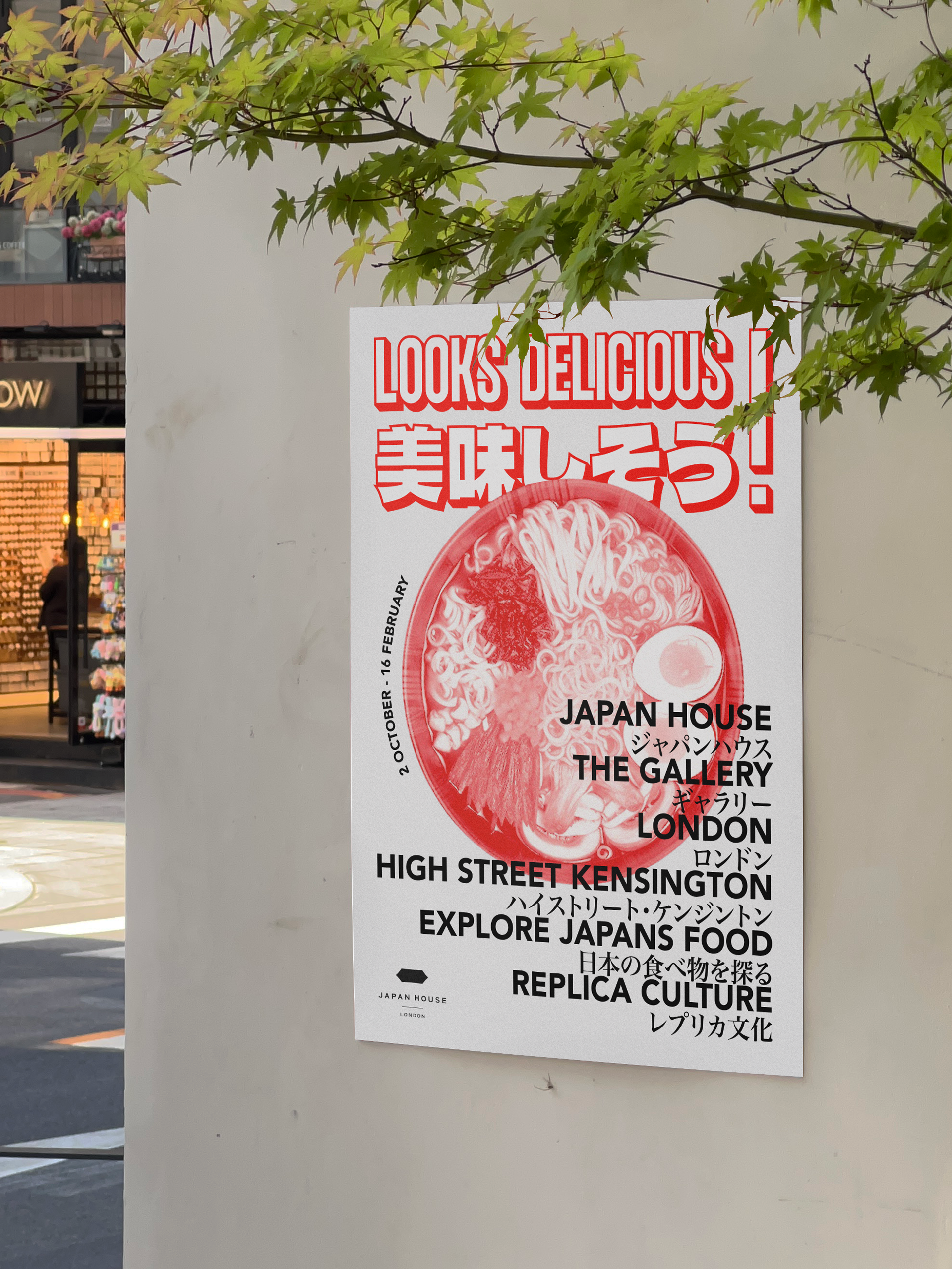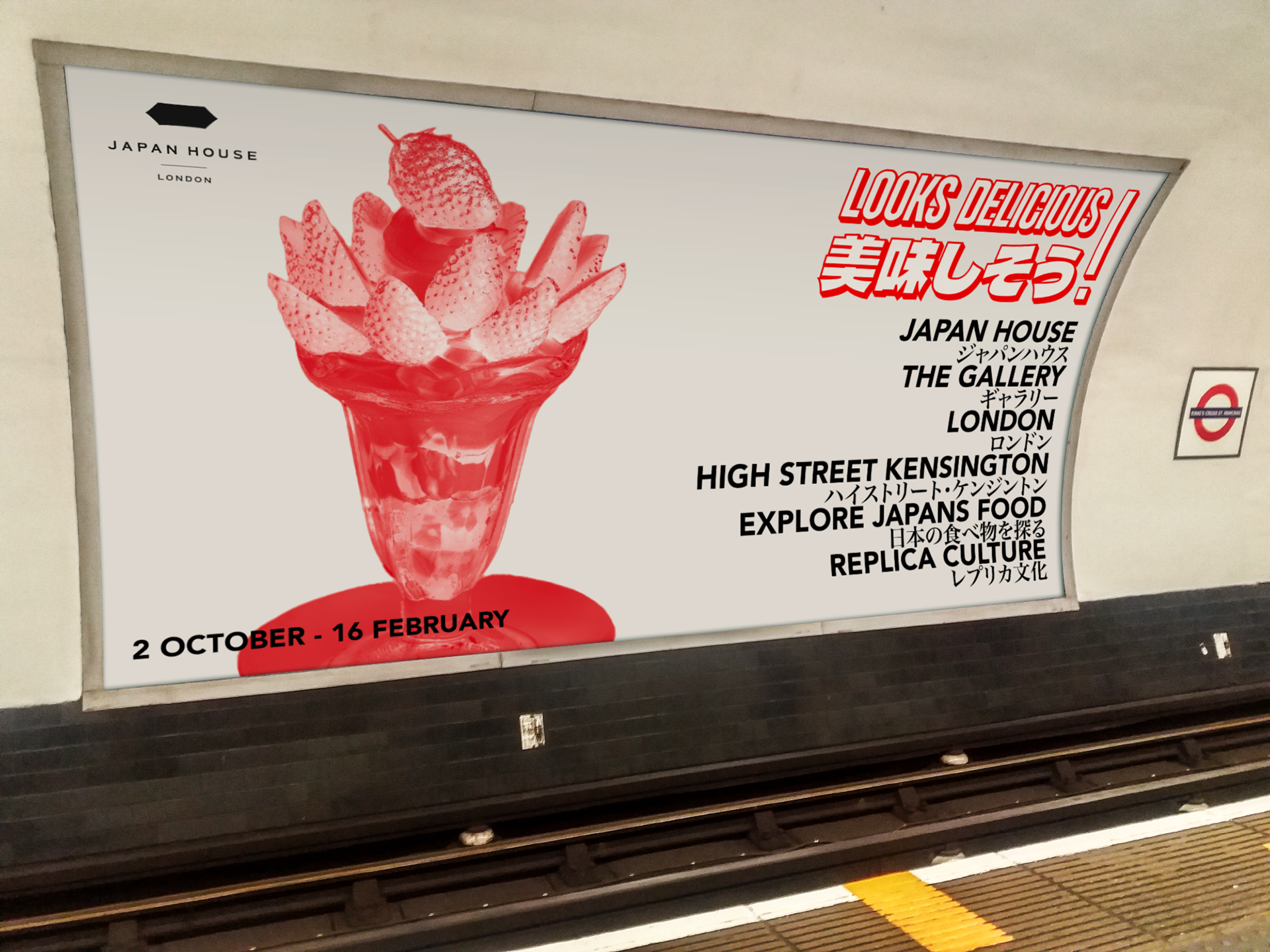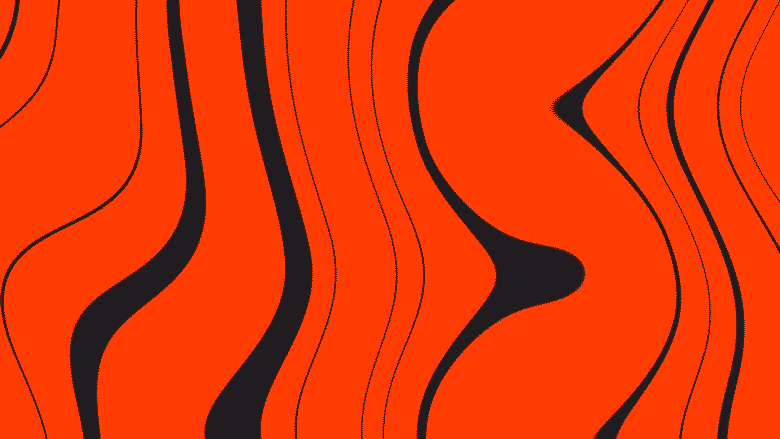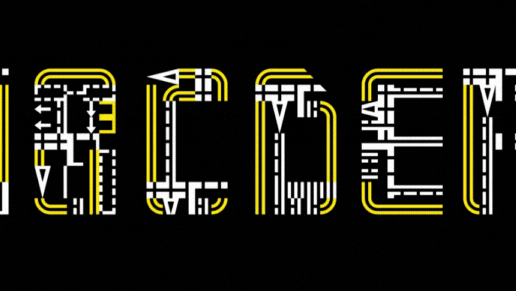Japan House - Looks Delicious
Personal Project
Brief
This was a self-set brief with the purpose of rebranding one of Japan House's exhibitions, 'Looks Delicious!'. This exhibition is all about Japan's history of food replica models, quite an unconventional piece of art but is prominent in Japanese culture as well as other countries in Eastern Asia. I decided to set myself this brief as I am interested in the exhibition and thought that it could do with its own unique branding in order to stand out and draw in attention from people in London.
Approach
My approach to this brief was inspired by a range of designers and their use of Japanese layout design. I used a style which capitalises on white space and minimal colour usage, allowing the viewer to focus on the text and imagery. The images I used are from the exhibition itself on the Japan House website (+ a few other royalty-free images).
Deliverables
• 'Looks Delicious!' Exhibition branding
• Print advertisements
• Event info leaflet
• Signage & wayfinding
• Tickets (physical & digital)
Inspiration:
Vitor Manduch
Daigo Daikoku


Landscape exhibition poster (print)

Information leaflet cover

Information leaflet content

Digital ceiling sign










